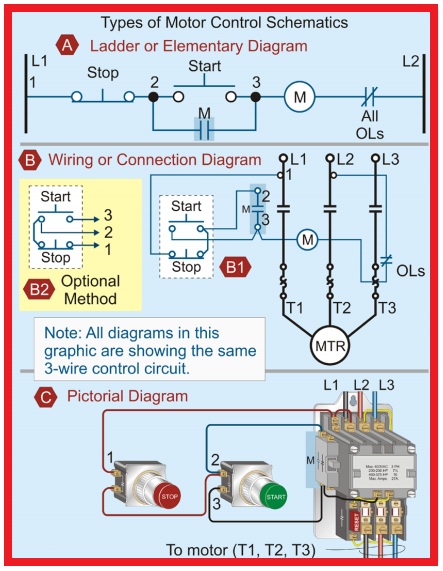Taming Electric Beasts: The Magic of Motor Control

Ever wonder how that whirring washing machine or that silently gliding elevator works so smoothly? The secret lies in the intricate dance of electrons within an electrical motor control system. These systems are the unseen conductors of our modern world, orchestrating the movements of countless machines, from tiny toys to massive industrial robots.
An electrical motor control system is essentially the brains behind the brawn of an electric motor. It's more than just an on/off switch; it's a sophisticated network of components that regulate every aspect of the motor's operation, including speed, torque, direction, and protection. Imagine trying to conduct an orchestra without a conductor – chaos would ensue. Similarly, without a control system, an electric motor would be a wild, untamed force, incapable of the precise and efficient movements we rely on.
The journey of electric motor management began in the late 19th century with rudimentary devices like rheostats and contactors. As technology advanced, so did the complexity and capabilities of these systems. The introduction of solid-state electronics in the mid-20th century revolutionized the field, leading to the development of programmable logic controllers (PLCs) and variable frequency drives (VFDs), which offer unprecedented levels of control and efficiency.
The importance of motor controllers in today's world cannot be overstated. They are essential for optimizing energy consumption, reducing wear and tear on equipment, and improving overall system performance. In industrial settings, precise motor control is crucial for automated processes, robotics, and manufacturing. In our homes, it ensures the smooth and efficient operation of appliances, HVAC systems, and even electric vehicles.
However, implementing and maintaining these systems isn't without its challenges. Issues such as power quality problems, sensor failures, and communication errors can disrupt operations and lead to costly downtime. Therefore, a thorough understanding of motor control principles and best practices is essential for anyone working with these systems.
A simple example of an electrical motor control system is the speed control in a ceiling fan. The control knob adjusts the voltage supplied to the motor, which in turn changes the fan's speed. More complex systems, like those used in industrial robots, utilize sophisticated algorithms and feedback loops to achieve precise and dynamic motion control.
One major benefit of advanced motor control is energy efficiency. VFDs, for instance, allow motors to operate at variable speeds, consuming only the necessary power for a given task. This significantly reduces energy waste compared to traditional methods of motor control. Another advantage is improved equipment lifespan. By controlling the motor's starting and stopping characteristics, control systems minimize stress on mechanical components, extending their operational life.
A well-designed motor governing strategy should encompass selecting the right motor and drive for the application, ensuring proper wiring and grounding, and implementing appropriate protection devices. Regular maintenance, including inspections and testing, is crucial for preventing failures and optimizing performance.
Advantages and Disadvantages of Electrical Motor Control Systems
| Advantages | Disadvantages |
|---|---|
| Increased Energy Efficiency | Initial Cost Can Be High |
| Improved Equipment Lifespan | Requires Specialized Expertise |
| Enhanced Process Control | Susceptible to Electrical Noise |
Five best practices for implementing electrical motor governance strategies include proper sizing of components, using appropriate protection devices, implementing effective grounding and shielding techniques, regular maintenance and testing, and utilizing advanced control algorithms for optimized performance.
Real-world examples include robotics in manufacturing, HVAC systems in buildings, electric vehicle propulsion, conveyor belts in industrial processes, and automated guided vehicles (AGVs) in warehouses.
Challenges include dealing with power quality issues, sensor failures, communication errors, and environmental factors. Solutions involve using surge protectors, implementing redundant sensors, employing robust communication protocols, and designing systems to withstand harsh environmental conditions.
FAQs: What is a VFD? What is a PLC? How does a motor starter work? What are the different types of motor control systems? How do I troubleshoot a motor control circuit? What are the safety precautions for working with motor control systems? What are the latest advancements in motor control technology? How can I optimize the performance of my motor control system?
Tips and tricks for optimizing motor management include using energy-efficient motors, implementing proper cooling strategies, and regularly monitoring system performance.
In conclusion, electrical motor control systems are the unsung heroes of our modern world, enabling countless applications across various industries and in our everyday lives. From improving energy efficiency and extending equipment lifespan to facilitating complex automation processes, these systems play a vital role in our technological landscape. Understanding the principles, benefits, and challenges associated with motor control is crucial for anyone working with these systems. By adopting best practices and staying informed about the latest advancements, we can harness the full potential of electric motors and drive innovation forward. Embracing efficient and reliable motor control is not just a smart choice, it's an essential step towards a sustainable and technologically advanced future. As we move towards greater automation and electrification, the role of sophisticated motor controllers will only become more critical. Investing in robust and well-designed motor control solutions is an investment in a more efficient, productive, and sustainable future.
Unlocking the secrets of electrical conductors
Cheap caffeine fix starbucks gift card discounts in canada
Elevate your digital sanctuary ultra hd 4k gaming wallpapers













